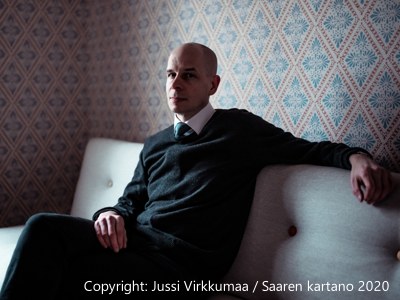Duration: ca. 19′
Publisher: Schott Music
Commissioned by the Sonar Quartet with support of the State of Brandenburg through an artist’s residency at Schloss Wiepersdorf
WP: Berlin, Dec. 18, 2015 (Sonar quartet)
Introduction:
The supposed perfection of the string quartet as instrumental combination turned out, to me, as a chimera on closer inspection. On the one hand the traditional string quartet lacks a complete octave in the lower register due to the absence of the double bass, on the other hand the use of two violins can only be justified by the classical ideal of the four-part satz; one of the two is actually redundant under the aspect of ‘efficient’ instrumentation.
The piece is intended as an intense examination of the possibilities of this very problematic line-up and and a challenge to the traditional “weightiness” behind it. Two core aspects stand side-by-side: on the one hand, an approach that meticulously examines small sound shifts and details, such as intonation, dynamics, duration of sound, register combinations. On the other hand, an attempt to find a personal interpretation of counterpoint, but less in the conventional sense, but as an idiosyncratic implementation of the idea of counterpoint as the both independent and interconnected/interrelated coexistence of thoughts, textures, attitudes.
The idea of the counterpoint is thus reinterpreted in a rather “physical” approach – in the sense that parts of the “sound body” string quartet are defined as being isolated, askew or even alienated. This refers particularly to the function of the two violins which assume a tumor-like function in the quartet: a made of the material of the whole body, they develop a life of their own and thus influence the whole organism. This process of growing together and apart is also used in combinations of one of the violins with viola and cello, until the piece is, through consequent use of unisons, reduced to a trio played by four instruments at the end. However, the idea of the “redundant fourth instrument” also affects the form: the piece could be subdivided into four “movements” (moderate – extremely fast – slow – very slow), of which the fourth is a second version of the third one. Even in the microform, the idea can be detected: many gestures consist of four elements of which two are identical or only slight variations of each other.
The title reflects this project in its complexity. The allusion to James Joyce’s novel, which introduces (Stephen) Dedalus as the visionary (but ultimately failing) inventor of Greek mythology is unmistakable. At the same time, the title contains a second reference to the subject of corporeality, here in the sense of aging: almost all sound material within the piece is used multiple times, thus bearing with every repetition more and more signs of aging and wear, but also of sophistication and condensation. Finally, the ironical variation of Joyce’s novel title contains a reference to the “old-fashioned” genre of the string quartet itself, as well as the equally antiquated respectful approach to the genre. This (self-)ironic ambiguity of the title is ultimately also reflected in the composition, which, despite its density and complexity, is characterized by a basic attitude of lightness and a playful approach to the challenges and opportunities of the cast.
